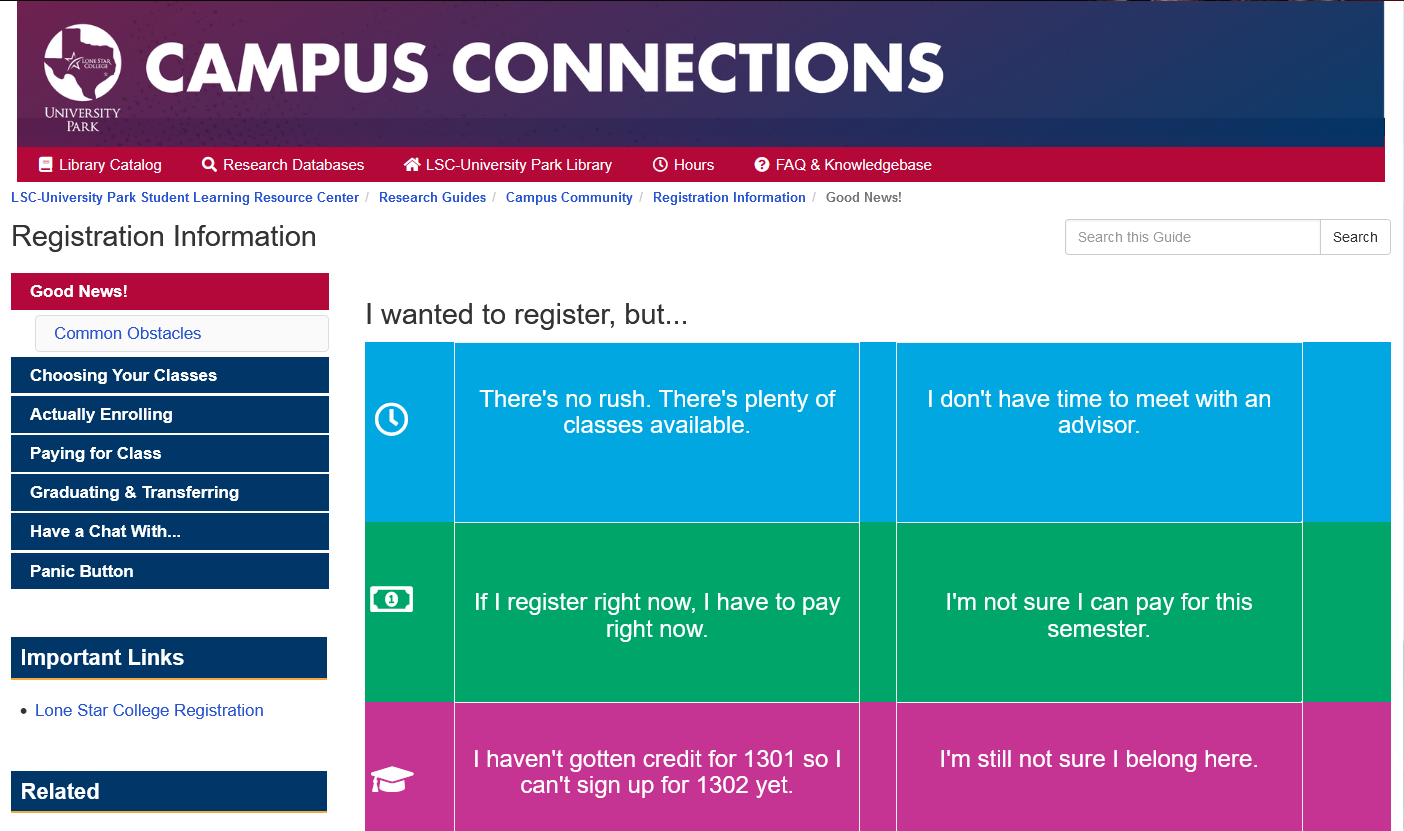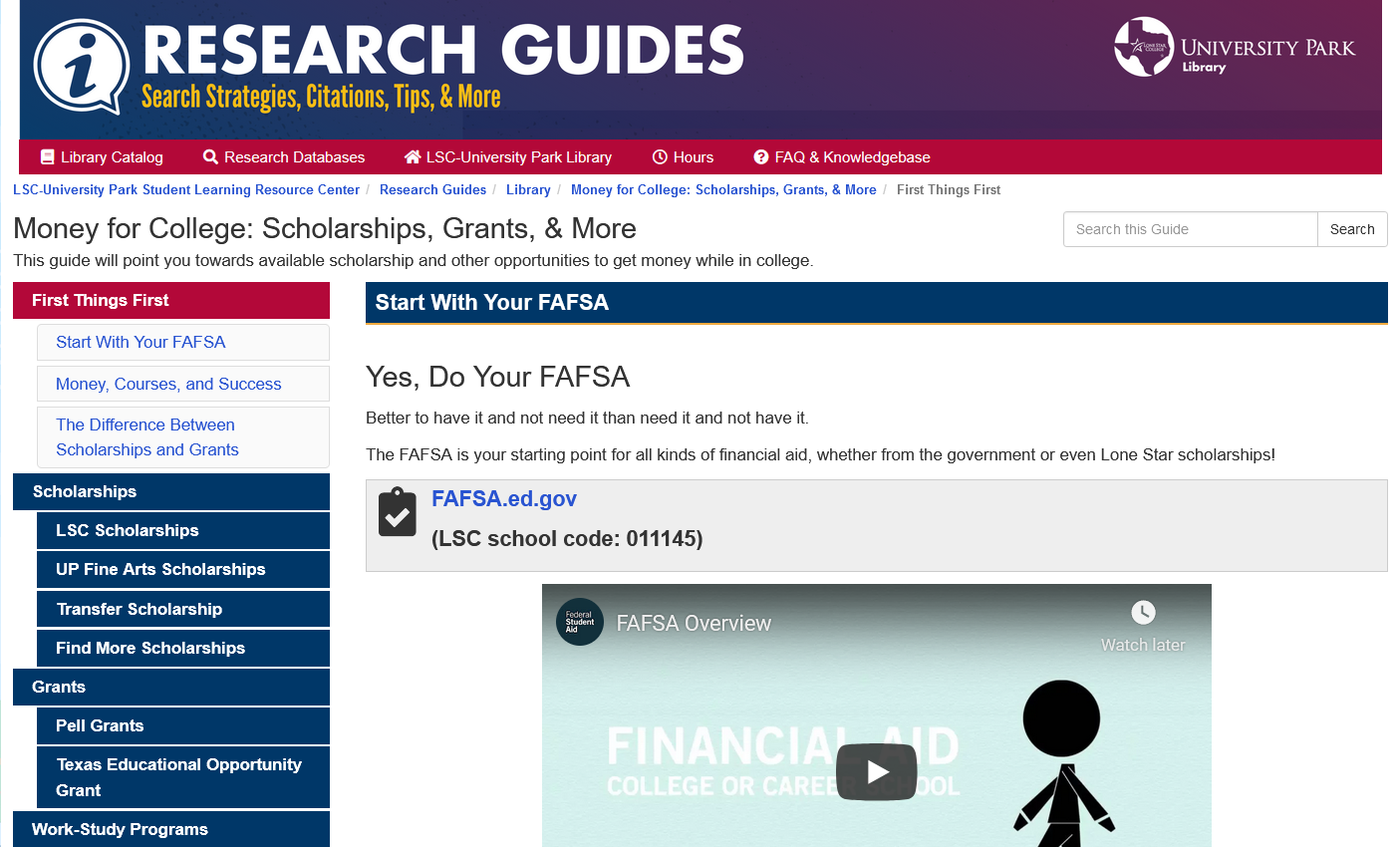… if the conversation is important to your community, you need to find a way to be a part of it. …it is important to be engaged in the major conversations of a community, even if you are on the periphery.
R. David Lankes (2011), Atlas of New Librarianship, p. 110
Before there’s student success, there’s student enrollment. We have had extra emphasis on enrollment of late, what with the pandemic and community colleges have taken it on the chin. Lots of questions asked and re-evaluation across campus: what does your area do to support enrollment?
Tough question. Easier to answer about persistence/re-enrollment — well, we supported their learning so their grades enabled them to move on, we create a friendly and engaging environment with learning and recreational opportunities — but first time admission and enrollment? That doesn’t feel like a strong fit, like being asked how the library meets the nutrition and exercise needs of its patrons. At worst, it felt like mandated mission creep: being librarians and tutors and circ staff wasn’t enough, we needed to be admissions officers, too.
Then one day I flipped through the Atlas of New Librarianship, looking to stir up thoughts but not about anything in particular. When I read this line, I had my own paradigm shift.
if the conversation is important to your community, you need to find a way to be a part of it.
Enrollment absolutely was important to our community, but the learning center so far was choosing to sit back and say “We’re doing what we do already.”
One of the conversations they identified was the faculty discussing redoing the core curriculum. This was a big deal at the college because it involved all departments and was seen as important (and contentious). When I asked what the library was doing in that conversation, the answer was: “Nothing. Why?”
Lankes, 2011, p. 110
“It’s the work of the faculty,” they said.
“Won’t a new core curriculum have an impact on the collections?” I asked.
“Absolutely. But what can the library add?” they asked.
“Is this the first college to redo the core curriculum? Can’t you provide examples of revised curricula from like institutions? Can you create a home for ongoing comment by the faculty and eventually students online?” I asked.
Exactly what I needed to read at that time!
Then, of course, in typical librarian fashion, I gradually settled on: what if…. LibGuide…? Would that be redundant to the actual school’s pages on registration and so forth? Still, my director thought it was worthwhile and immediately pitched the idea to the Strategic Enrollment Management team, who were overwhelmingly enthusiastic.
As I was building the skeleton, I reached out to one of our First Year Experience instructors who always seems to have good instincts about his students. What barriers (nay, excuses even) did he hear from students at registration time? His answers set me on the path for both how I organized the guide, but most importantly, niche content not directly addressed on the official site that I was able to provide info for.
Then as I was midway through, I realized: money. Free money for college. What about a guide to scholarships and grants? (Which is more squarely in typical LibGuide-land, I think.)
The scholarship guide does point students towards major scholarship databases to search for themselves, but I chose to also list specific scholarships on the guide, as many scholarships are either not available for 2-year students or they’re ambiguous about the 2-year/4-year distinction. Our official financial aid pages don’t do a detailed listing of third-party opportunities (understandably), but that also meant a nice empty niche for the library to fill!
Aha, but then there’s also a lot of scholarships targeted specifically at current high school students, juniors and seniors — and there again is another chance to loop back around to supporting enrollment.

